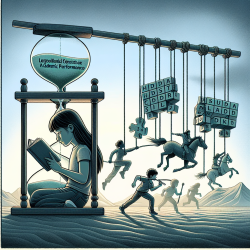Introduction
In the realm of speech-language pathology and educational services, understanding the broader societal context can significantly enhance our practice. A recent study titled "Moral panic about 'covidiots' in Canadian newspaper coverage of COVID-19" provides valuable insights into how media narratives can shape public perception and behavior. By examining this research, practitioners can learn to navigate media influences and improve their communication strategies, ultimately leading to better outcomes for children.
The Role of Media in Shaping Public Perception
The study highlights how media coverage during the COVID-19 pandemic contributed to a moral panic by stigmatizing individuals who did not comply with public health guidelines. Terms like "covidiots" emerged, labeling those who failed to adhere to preventive measures as a threat to public health. This media-driven narrative created a climate of fear and hostility, influencing public behavior and attitudes.
Implications for Practitioners
Understanding the dynamics of moral panic and media influence is crucial for practitioners in speech-language pathology and related fields. Here are some ways to apply these insights:
- Enhance Communication Strategies: Recognize the power of language and media in shaping perceptions. Use clear, empathetic communication to counteract negative stereotypes and foster understanding among children and their families.
- Promote Media Literacy: Educate children and families about media literacy, helping them critically evaluate information and resist sensationalist narratives.
- Advocate for Evidence-Based Practices: Emphasize the importance of data-driven decisions in public health communication to reduce stigma and misinformation.
Encouraging Further Research
The study underscores the need for ongoing research into the effects of media narratives on public health behavior. Practitioners can contribute to this field by:
- Participating in Collaborative Research: Engage with interdisciplinary teams to explore the impact of media on public perception and behavior.
- Documenting Case Studies: Share experiences and outcomes from your practice to contribute to a broader understanding of media influence in educational and therapeutic settings.
Conclusion
By integrating insights from the study of moral panic in media coverage, practitioners can enhance their skills and improve outcomes for children. Embracing data-driven decisions and fostering media literacy are essential steps in navigating the complex landscape of public health communication. For those interested in delving deeper into the original research, please follow this link: Moral panic about “covidiots” in Canadian newspaper coverage of COVID-19.










